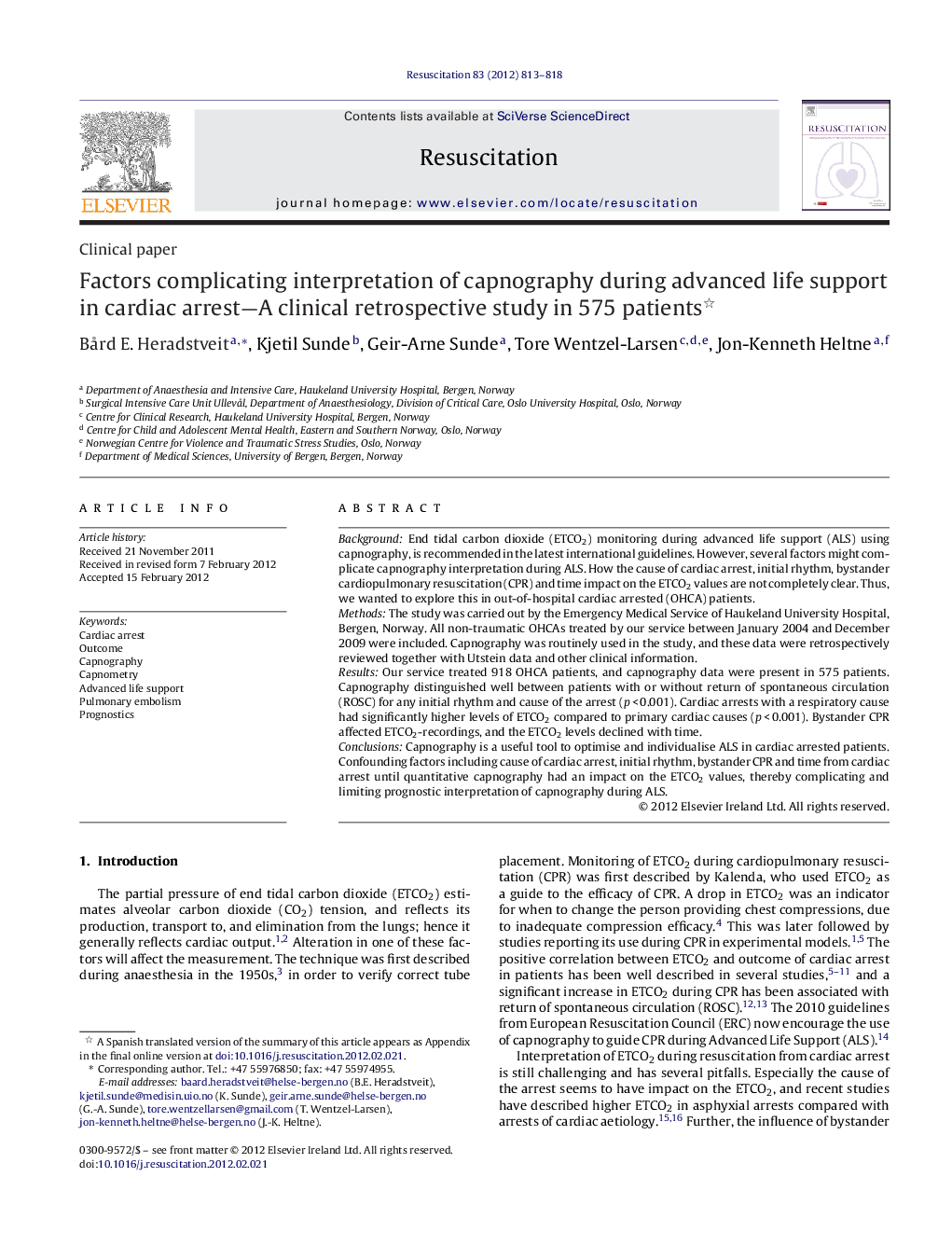| Article ID | Journal | Published Year | Pages | File Type |
|---|---|---|---|---|
| 3008837 | Resuscitation | 2012 | 6 Pages |
BackgroundEnd tidal carbon dioxide (ETCO2) monitoring during advanced life support (ALS) using capnography, is recommended in the latest international guidelines. However, several factors might complicate capnography interpretation during ALS. How the cause of cardiac arrest, initial rhythm, bystander cardiopulmonary resuscitation (CPR) and time impact on the ETCO2 values are not completely clear. Thus, we wanted to explore this in out-of-hospital cardiac arrested (OHCA) patients.MethodsThe study was carried out by the Emergency Medical Service of Haukeland University Hospital, Bergen, Norway. All non-traumatic OHCAs treated by our service between January 2004 and December 2009 were included. Capnography was routinely used in the study, and these data were retrospectively reviewed together with Utstein data and other clinical information.ResultsOur service treated 918 OHCA patients, and capnography data were present in 575 patients. Capnography distinguished well between patients with or without return of spontaneous circulation (ROSC) for any initial rhythm and cause of the arrest (p < 0.001). Cardiac arrests with a respiratory cause had significantly higher levels of ETCO2 compared to primary cardiac causes (p < 0.001). Bystander CPR affected ETCO2-recordings, and the ETCO2 levels declined with time.ConclusionsCapnography is a useful tool to optimise and individualise ALS in cardiac arrested patients. Confounding factors including cause of cardiac arrest, initial rhythm, bystander CPR and time from cardiac arrest until quantitative capnography had an impact on the ETCO2 values, thereby complicating and limiting prognostic interpretation of capnography during ALS.
